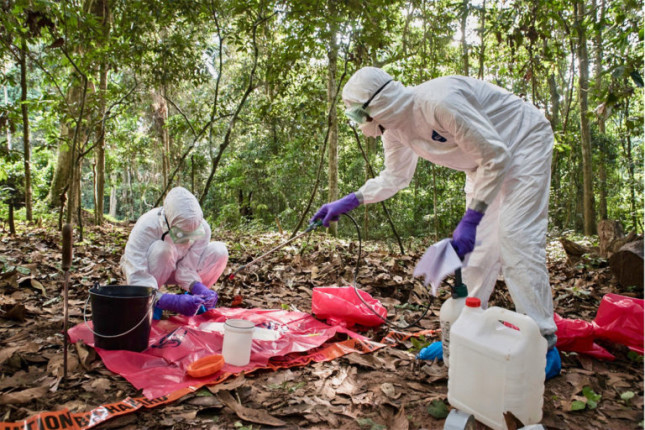-
Sharon Guynup, Mongabay
Address Risky Human Activities Now or Face New Pandemics, Scientists Warn
August 9, 2021 By Wilson Center Staff
In early 2020, as a novel coronavirus swept the globe, a little-known word entered dinner table conversation. COVID-19 was “zoonotic”: a disease that originated in animals, then evolved, breached the Darwinian divide, and jumped to humans. On March 11, 2020, the World Health Organization (WHO) declared a global pandemic.
Now, with another wave surging worldwide — and more than 600,000 new cases being diagnosed daily — a new fear-evoking word has entered the lexicon: “variant.”
“The war has changed,” according to an internal document from the U.S. Centers for Disease Control and Prevention (CDC). The new highly contagious Delta variant has evolved to spread with the ease of chickenpox and causes more serious disease.
Now, infections near 200 million globally, with a staggering death toll: more than 4.2 million lives lost. Experts say the true numbers are far higher: A new study estimates deaths in India at 10 times the official figure. The pandemic has also sparked a global recession, thrusting more than 95 million people into extreme poverty. With this new Delta variant, and the very likely possibility of more variants to come, the crisis is far from over.
As the world reels, experts are raising a bright red warning flag: This is not just a once-in-a-century event. “Pandemics are [happening] more like once every 10 years right now,” said zoologist Peter Daszak, president of the nonprofit EcoHealth Alliance in New York City. Meanwhile, there is little discussion on why the COVID-19 pandemic happened or the urgent action needed to prevent the next global disease outbreak, he said.
Sources: Congressional Research Service, EcoHealth Alliance, Institute for Health Metrics and Evaluation, The New York Times, The Washington Post, World Health Organization, Worldometers.
Photo Credit: The carcass sampling method uses knowledge and experience gained from previous disease outbreaks. Samplers work in pairs and wear personal protective equipment, courtesy of Sebastien Assoignons/WCS.
 A Publication of the Stimson Center.
A Publication of the Stimson Center.



